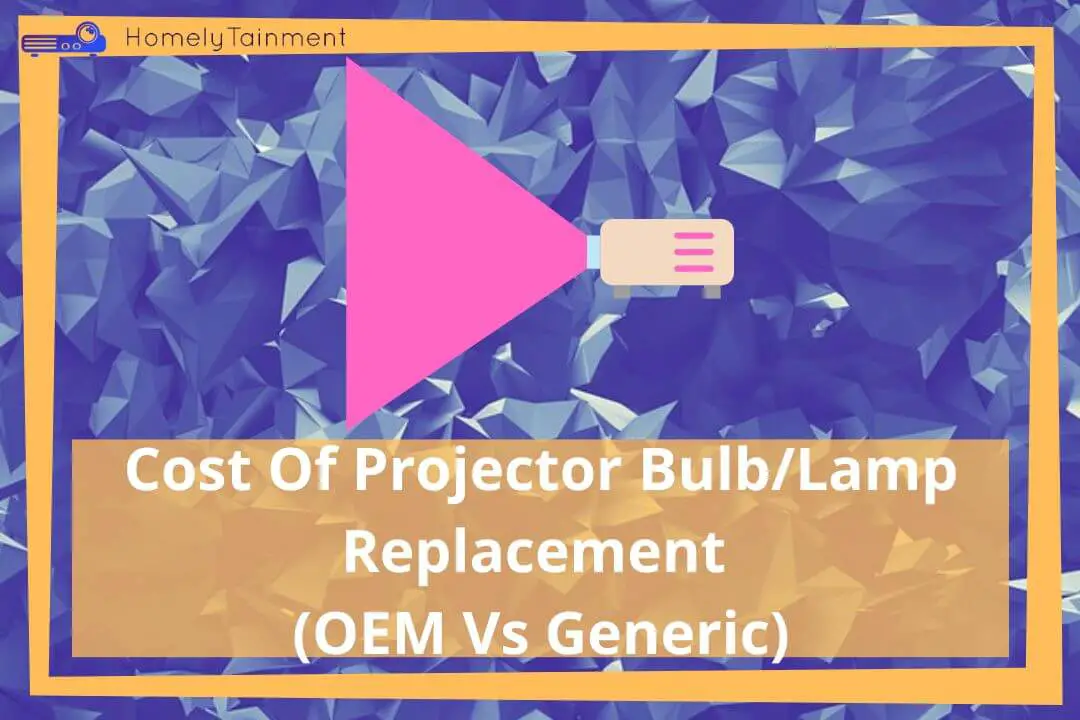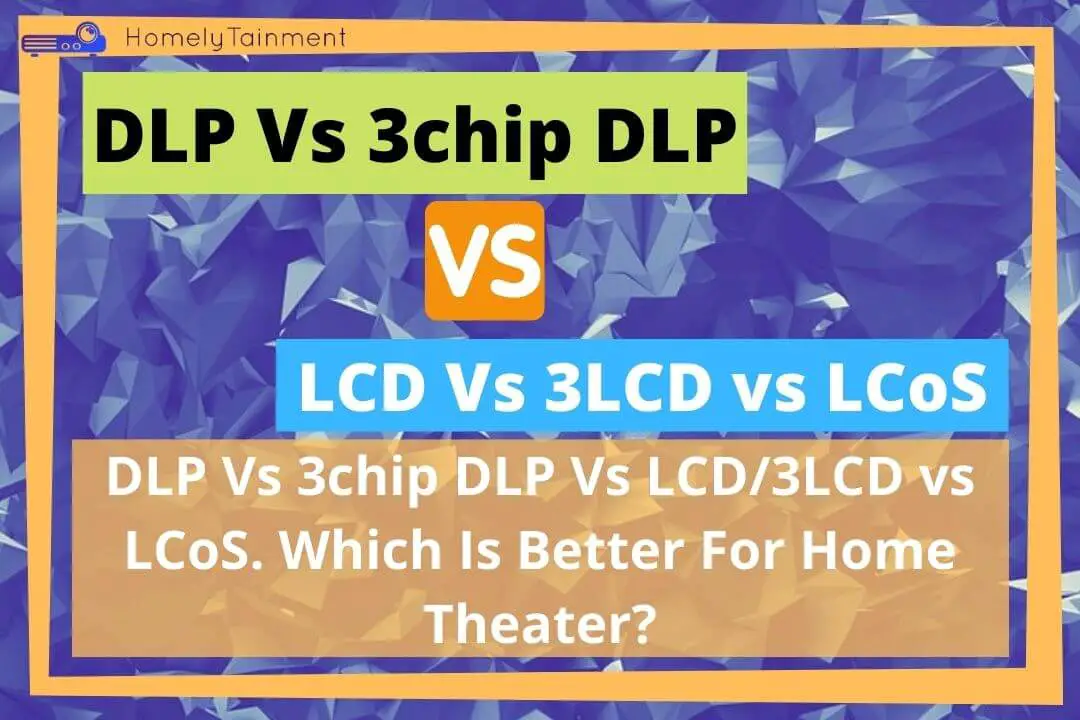
Homelytainment earn commissions (at no additional cost to you) if you purchase products from retailers after clicking on a link from our site.
We all love bigger screen sizes and love to get a projector for that purpose. Projector-based home theater looks cool. But there are different projection technologies that can confuse newbies to choosing what for themselves. That’s why I have written this in-depth guide about these technologies. So, which is better for home theater, DLP Vs LCD Vs LCoS?
At A Glance: As a general rule of thumb, If your home theater is dark and has no ambient light then use an LCoS projector, but if your room has some amount of ambient light then use 3LCD projection technology’s projector.
Keep reading as we will be discussing each one in detail and will also compare them at the end of this guide. We will be discussing the pros and cons too. You can know which one is the best for you after reading this guide.
Don’t forget to read the poll results at the end. I have conducted this poll in a Facebook group. You will know what others are choosing.
How does projection technology work in each type of projector?
The basic principle of projection technology is basically the same in every projection technology.
There is a source of light. This source of light is just white. This light goes through either a color wheel, LCD, or LCoS technology to give it the needed colors. The newly colorized light goes through the lens, and then it is projected on a screen.
With the help of his process, each projector creates an image full of color pixels. This is the basic model of each projector. I talked about it, so you can be prepared for the upcoming technologies.
DLP Projection Technology

The DLP is the most popular one. You can get a lot of DLP projectors when searching for a home theater.
How does it work? The light source goes through a color wheel. This color wheel has three colors. One is green, and the others are red and blue. The wheel spins so fast that these three colors produce an image full of colors. The separation of these three colors can be spotted by naked eyes because the wheel spins so fast.
These color wheels give a colored nature to the light. This light then collides with a chip. This chip has thousands of small mirrors per square inch and is called DMD. These mirrors are controlled in a way that they reflect light at a shaping lens once they are required to do, otherwise, they divert it.
The light is reflected at the shaping lens. This light further goes through a projection lens and will be projected on the screen as an image. This whole process happens within microseconds, that’s why we can’t sense the transitions of colors.
Know what is the best aspect ratio and screen size for a home theater? This guide is based on my experience. Have the best.
DLP projector Pros
- Need less filter cleaning
- Need less power
- Its colors can work for a very long time. In some cases, its colors won’t fade even after 10 years of usage
- It needs less light to produce bright images. That’s why it can prolong lamp life, too.
- They need less power, that’s why they are a little cheaper than other technologies.
DLP projector Cons
- Sometimes the images have a rainbow effect. In cheaply made projectors. You will see rainbow colors at the edges of human faces or other things when watching movies on a DLP projector. These rainbow effects can’t be seen in well-built and expensive 1-chip DLP projectors.
- DLP projectors are mainly very noisy because of the color wheel, but well-built projectors will have less noise
- DLP projectors usually have higher input lag during gaming than other projector technologies.
How is 3-chip DLP different from single-chip DLP?
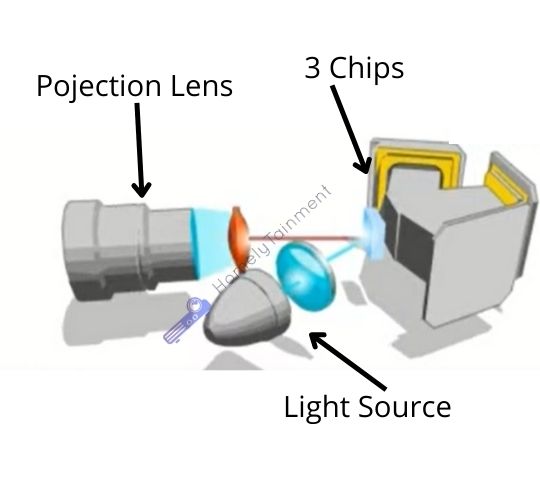
Whereas in the single-chip, the projection technology has only one mirroring device for all the colors. In the 3-chip DLP, each color has its own mirroring device called DMD.
Light passes through each color’s dedicated DMD, and a colorized light of each DMD passes through the shaping lens and then through the projection lens.
In this process, the images are produced this way. The 3-chip DLP is better than a single chip in many ways. These differences are discussed in the pros of it. Keep reading.
Pros of the 3-chip DLP Projector
- Better contrast between white and blacks in the image
- Almost zero rainbow effect
- Better input lags for gaming
- Better colors vibrancy
Cons of the 3-chip DLP Projector
- Very expensive. You can’t find a 3-chip DLP projector for under $1000
Stay till the final verdict to know which is the best technology for home theater among them.
Perfect your picture quality. Read, is the ALR screen worth it? I have compared its price and picture quality with normal screens.
LCD Projection Technology
At first, the single ship LCD projection technology was introduced to the projectors. This technology is almost abundant in the brands. The brands have shifted to 3LCD.
Now, there is no modern projector that is relying on a single chip LCD. But we will discuss it, so we can better understand the 3-chip LCD technology.
How does it work? 3 Lights of different colors green, red, and blue pass through a single LCD chip that produces a color image.
The produced image was lacking in the contrast of colors and had shallow blacks. The shallow blacks contributed more to the sense of like the colors are washed out.
We are not discussing the pros and cons of this type of projection technology because now modern LCD projectors don’t have this technology.
3LCD Projection Technology
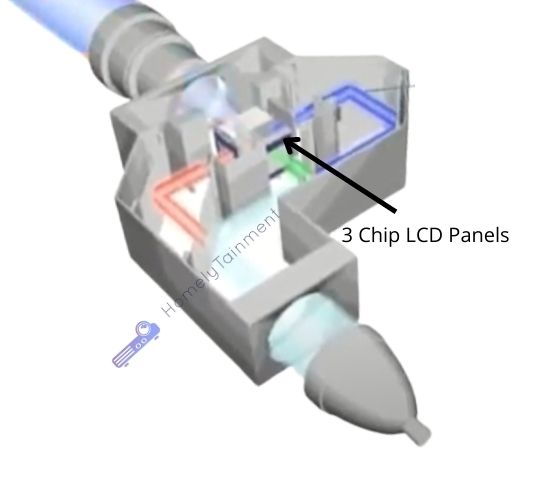
This is the technology that LCD projectors brands have adopted. In this technology. A white light comes out of the source.
The three lights out of this white light are extracted. The green light passes through its LCD panel, and the red and blue pass through their respective LCD panels. This technology has three LCD panels. One for each color.
The three-color lights combine in the prism, where they create an image. This image then goes through the projection lens and then projected on the screen.
Each LCD panel has cells. These cells can be polarized with the help of electric charges. This polarization passes through the light through itself when needed and blocks it when needed. It can also pass some amount of light through itself. In this way, it creates shades of gray and gives better contrast between the blacks and whites of the image.
Due to the extinction of single LCD that’s why now 3LCD projectors are referred to as LCDs.
Read this buyer guide for a short throw projector. Have the best projector for your needs.
3LCD projector Pros
- Nice contrast between blacks and whites in the image
- Vivid colors and vibrancy in the colors
- No rainbow effects
- The better picture quality on a budget
3LCD projector Cons
- Colors can be poorly affected after a few years of usage
- Shorter lamp life
- Due to LCD cells’ polarization, more energy is consumed
- It has a screen door effect, which means the pixels can be visible when watching it from a very close
LCoS Projection Technology
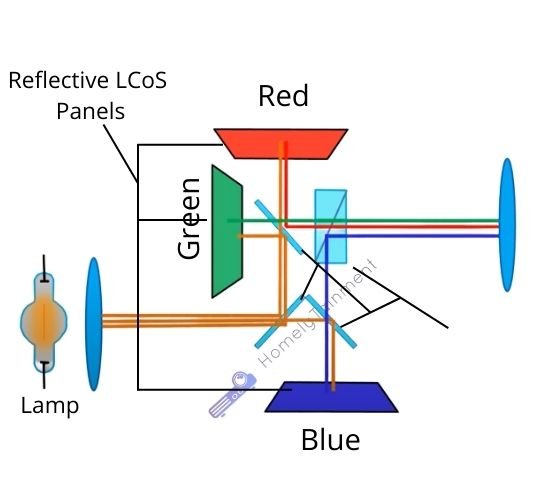
This technology works on the same principle as LCD, but here the panels are accompanied by silicon magic. The LCoS stands for liquid crystal on silicon.
A white light passes through three LCoS panels. Every color has its panel. The red, green, and yellow have a panel.
The three different colors combine in a prism and form an image. This image is passed through a projection lens and projected on the screen.
It is a more modernized version of simple 3LCD technology.
LCoS projector Pros
- Better colors than 3LCD
- Better contrast ratio than 3LCD
- Smoother picture
- No screen door effect here
LCoS projector Cons
- More expensive
- There are not a lot of options available. Not been integrated into many projectors
- Almost every brand has a special name for LCoS and that won’t be LCoS. It is confusing
Now, we know more about each technology. Let’s compare them in three fields, price, brightness, and image quality. These three fields are the most important.
Stay for the final verdict to know about the best one.
Read this guide to know, what throw ratio projector do you need? I have suggested a throw ratio for each available space in a theater room.
DLP Vs 3chip DLP Vs 3LCD Vs LCoS: Which Is Better?
The reason I have excluded single chip LCD is that now it is abundant by brands and 3LCD technology is adopted.
| Feature | DLP Ratings | 3chip DLP Ratings | 3LCD Ratings | LCoS |
|---|---|---|---|---|
| Price | 10/10 | 6/10 | 10/10 | 10/10 |
| Picture Quality | 3/10 | 9/10 | 7/10 | 10/10 |
| Brightness | 6.5/10 | 6.5/10 | 10/10 | 8/10 |
Price (Results Obtained from Research)
| Price per inch | DLP | 3chip DLP | 3LCD | LCoS |
|---|---|---|---|---|
| 100 inches screen | $20 | $110 | $20 | $60 |
3Chip DLP projectors are mainly used in professional cinemas. They are available for home theater too.
The most expensive is the 3chip DLP projector. It can be found harder than other technologies and also more expensive.
The 3chip DLP are expensive but stay for the final verdict to know if they are worth it.
Picture Quality (Results obtained from an experiment)
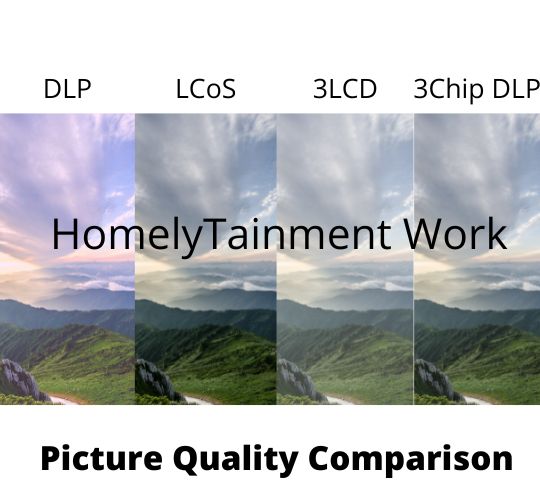
LCoS has a far superior color contrast and contrast ratio to black and white. I love the image quality of the LCoS because you get more details than all other technologies.
The DLP has rainbow effects. These effects can be more visible when the pixels are changing fast like in an action scene. You can see there are no rainbow effects in the 3chip DLP. The 3-chip DLP was created to remove the rainbow effects from the DLP projection technology.
You can see that the 3chip DLP is giving a tough competition to the LCoS in contrast ratio.
Brightness (Results obtained from an experiment)
The brightest in the competition is the 3LCD. It can fight the ambient light present in the room. The 3 chip DLP is the second and the LCoS is the third in this feature.
Now, is the time for the final verdict.
Final Verdict: Which is worth it?
- If your room is treated well and has no ambient light then the best option for you is LCoS and the second best is 3 Chip DLP.
- If your room has some amount of ambient light then the best will be 3LCD and the second best will be 3 Chip DLP.
- In both cases, the 3 Chip DLP is there. Now, it is upto you to choose which one.
Read this review guide about the best projector. I have reviewed the top 5. You can’t miss this.
Which projection technology are you using in your home theater? FB Poll.
| Poll Options | Stats |
|---|---|
| 3Chip DLP | 39% |
| 3LCD | 16% |
| LCoS | 45% |
I conducted this poll in a Facebook group. So, you guys can make better decisions for yourself.
FAQs
What is a rainbow effect projector?
The rainbow effect is when the viewers can see visible rainbows in the image of the projector.
This rainbow effect occurs only in single-chip DLP projectors. But well-built 3-chip DLP projectors don’t have this annoying effect.
How long do DLP projectors last?
Many DLP projectors provide 15000 hours of lamp life. This means that it can last for 10 years if you are using it for 4 hours per day.
Many DLP projectors provide 15K hours and 3-chip DLP provides the same number of lamp life.
Point to be noted: The projector’s lamp life is hugely based on light source too and not only on the projection technology. Laser-based has the longest life and the bulb has an average life span.
How long do 3LCD projectors last?
Average 3LCD projectors provide 5000 hours of lamp life. This means it can last for 3 years if you are using it for 4 hours per day.
The LCD panel’s cells consume a lot of light. That’s why it has a shorter lamp life.
How long do LCoS projectors last?
The Average LCoS projector provides 6000 hours of lamp life. It means it can work for 4 years if you are using it for 4 hours per day.
The reason that LCoS provides shorter life is that it is based on the same technology as 3LCD.
Helpful Resources For The FAQs To Read More
- This was my opinion, read more about it from Epson Blog. (Resource for the first answer)
- You can collect the lifespan of projectors easily by reading my this guide. How many years does a projector last? (Resource for the second answer)
- This was my opinion, read more about it in this AVSforum discussion. (Resource for the third answer)




